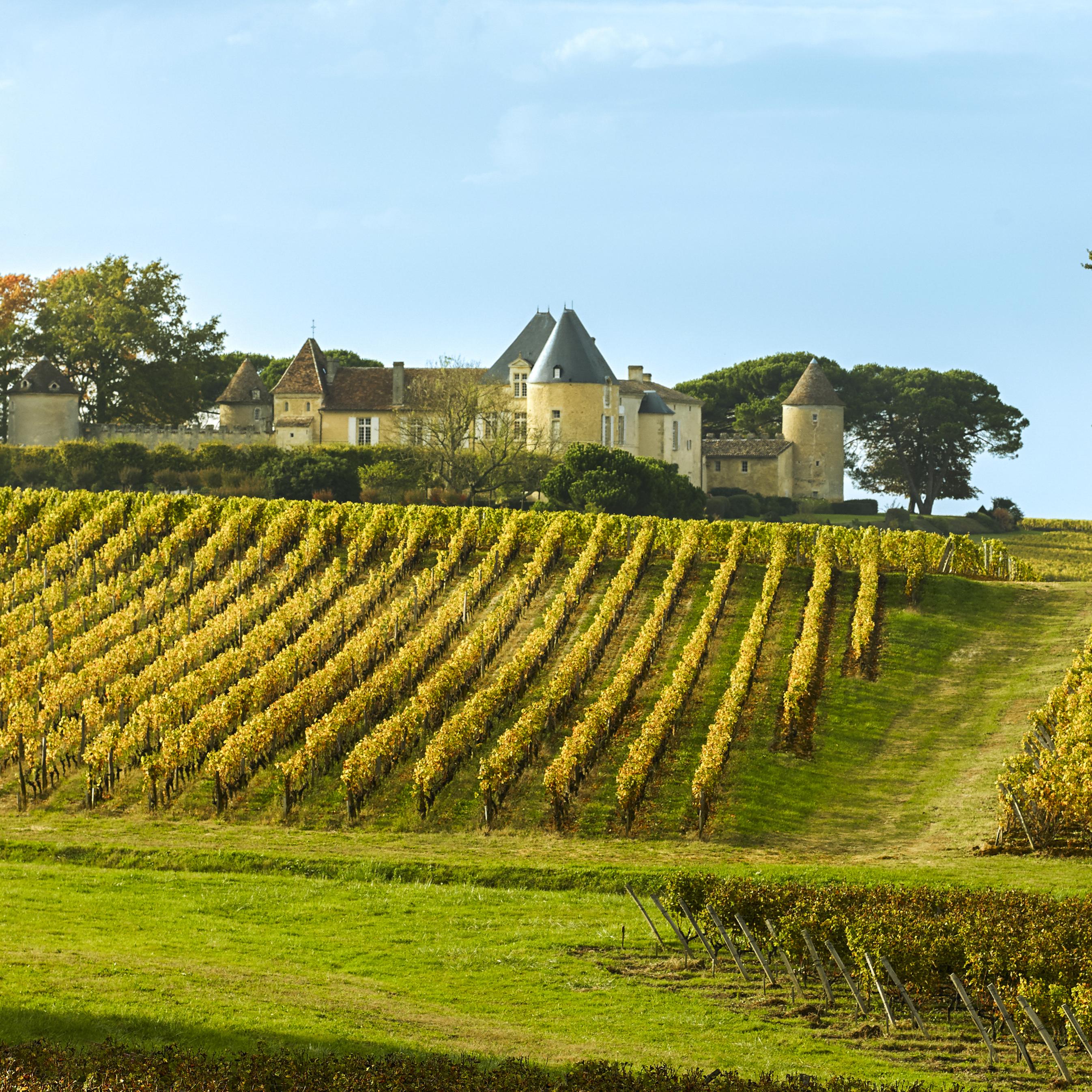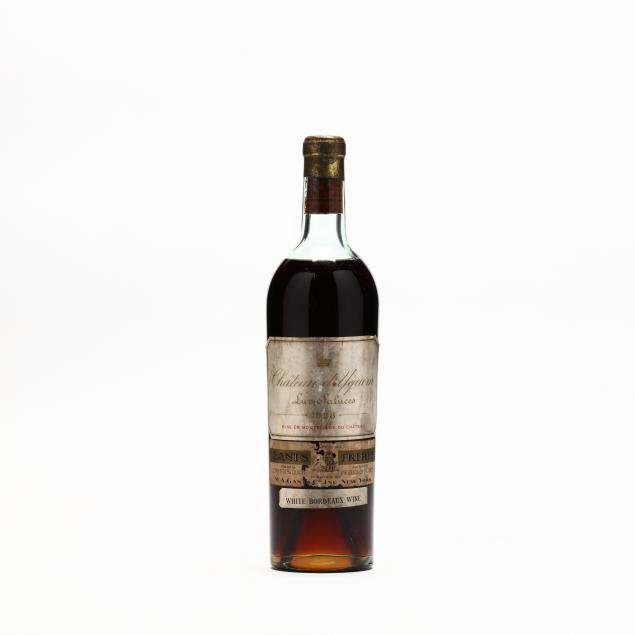
A Symphony of Flavors
"Apricot, quince, pineapple, almond, verbena, fig, rose, lychee, grapefruit, bitter orange, vanilla, saffron, roasted coffee beans... The smells of an entire market are concentrated in a glass of Yquem." – Chateau d’Yquem
Southeast of the French city of Bordeaux, nested in the Graves AOP (appellation d’origine controlee) is the foggy and humid Sauternes AOP region. Situated between the Garonne and Ciron Rivers, this land produces some of the world’s best sweet wines. The unique terroir of this region creates a perfect environment for the manifestation of botrytis -affected sweet wines. Botrytis cinerea, or commonly called, “the noble rot,” is a fungus that grows on wine grapes when conditions permit. Botrytis causes grapes to dehydrate on the vine, thus concentrating the sugars of the grapes. The effect is a sweet, deep colored wine, with aromas and flavors of honey, saffron, and mushroom.

Production of wine from botrytis-affected grapes is a difficult art. Each growing season, or vintage, produces a different crop, depending on the specific climate of the year. Some vintages never get off the ground. For some vintages the stars align. A wine bottle is thus a time capsule of history. Chateau d’Yquem is the only Premier Cru Superieur (superior first growth) estate within Sauternes. The 1928 season at Chateau d’Yquem, the color of which can be seen in the two lots of Chateau d’Yquem – Vintage 1928 we are offering in our upcoming January 20th Fine Wine Auction, has been described as, “Spring was fairly cool and flowering took place on an average date. This was followed by a warm, dry summer and then storms in late August…Noble rot developed well…Things became more complicated on the 9th of October…” (Chateau d’Yquem).
The Grapes of d’Yquem
The 400-plus year history of Chateau d’Yquem reads like an epic novel, full of interesting personalities and monumental events. Chateau d’Yquem began when the Sauvage family received a feudal tenure over the estate in 1593. A few years later the family built the now famous chateau and began to methodically plan out the vineyard, plot by plot, as it remains today. The family became full owners of the estate in 1711, during the reign of Louis XIV.

The late 18th century brought turbulent times for France. Despite being a staunch opponent of the French Revolution, Francoise Josephine de Sauvage d’Yquem, the young widow of Count Louis Amedee de Lur-Saluces, was able to hold on to the family property. In 1826 she built a new wine cellar, thus transforming the estate into an international business that had already attracted significant attention. Posthumously dubbed, “The lady of d’Yquem” by Emperor Napoleon III, the estate was designated the only “Premier Cru Superieur” in the famous Bordeaux Classification of 1855.
Surviving the phylloxera crisis of the late 19th century (a vine louse -- insatiable insects), serving as a hospital in World War I, and enduring the recession of the 1930s and, subsequently, World War II, Chateau d’Yquem carried on with its work of making superior wine. In the late 20th century the estate was acquired from the de Lur-Saluces family by LVMH Moet Hennessy-Louis Vuitton.
So what about the wine?
The color of the wine has been eloquently described as, “A shimmer of sparkling gold metamorphosing into topaz, amber, mahogany…” On the nose, depending on the vintage, one can detect any combination of, “apricot, quince, pineapple, almond, verbena, fig, rose, lychee, grapefruit, bitter orange, vanilla, saffron, roasted coffee beans...” And the taste. The palate is “sensual, smooth, sweet, round, charming, opulent...there are countless adjectives to describe the pleasurable sensations procured by this great wine.” The sweet and sumptuous taste lingers on your palate long after the wine has left your mouth.
The color of the wine has been eloquently described as, “A shimmer of sparkling gold metamorphosing into topaz, amber, mahogany…” On the nose, depending on the vintage, one can detect any combination of, “apricot, quince, pineapple, almond, verbena, fig, rose, lychee, grapefruit, bitter orange, vanilla, saffron, roasted coffee beans...” And the taste. The palate is “sensual, smooth, sweet, round, charming, opulent...there are countless adjectives to describe the pleasurable sensations procured by this great wine.” The sweet and sumptuous taste lingers on your palate long after the wine has left your mouth.

How does one drink dessert wine?
Sweet wines, such as Yquem, are typically served in smaller glasses and often paired with dessert. But not always. Food and beverage pairing is an art in and of itself. A classic pairing suggestion recommends enjoying a Sauternes style wine with Foie Gras as the lush wine is a great match for the rich and buttery delicacy. Other suggested pairings include:
"...after hearing Mozart, the ensuing silence is still Mozart. After a sip of Yquem, the moments that follow are still Yquem"
-Frederick Dard
Featured Bottles
Fine Wine Auction
January 20th, 12pm EST
Sweet wines, such as Yquem, are typically served in smaller glasses and often paired with dessert. But not always. Food and beverage pairing is an art in and of itself. A classic pairing suggestion recommends enjoying a Sauternes style wine with Foie Gras as the lush wine is a great match for the rich and buttery delicacy. Other suggested pairings include:
- Match Yquem with Mediterranean cuisine
- Enjoy with blue cheeses or an old Comté cheese
- Try with quail, duck, or other poultry
"...after hearing Mozart, the ensuing silence is still Mozart. After a sip of Yquem, the moments that follow are still Yquem"
-Frederick Dard
Featured Bottles
Fine Wine Auction
January 20th, 12pm EST



